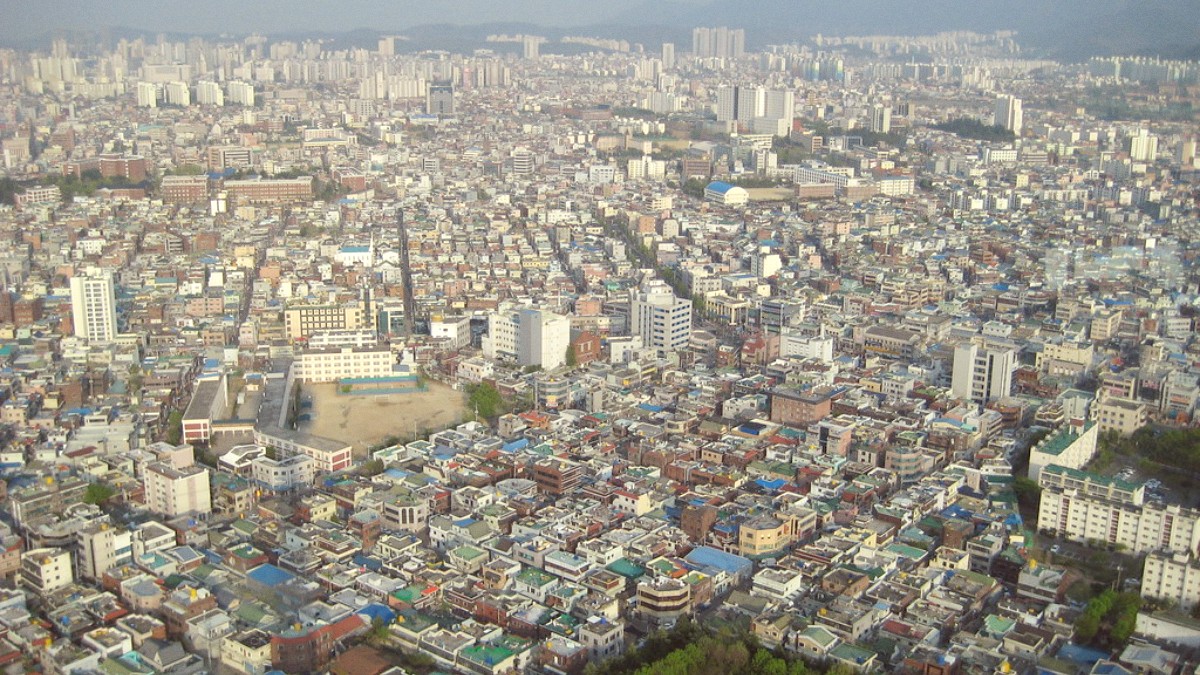
Gyeongsangbuk Do, South Korea
Daegu cuisine is characterized by savory, spicy, and hearty flavors. This profile mirrors the city's famously hot summers, which historically led to a preference for invigorating, spice-laden foods.
The region's agricultural traditions, specifically apple cultivation, contributed to some dishes incorporating a touch of sweetness. The textile industry also supported a practical, hearty cuisine for laborers.
While part of Korea, Daegu cuisine includes distinct dishes distinguishing it from other regions.
Its iconic dishes, like spicy stewed ribs (jjimgalbi) and flat dumplings (napjak mandu), hold a strong association with the city.
These unique specialties highlight Daegu's own culinary heritage.
Spicy braised short ribs. Daegu's most famous dish, recognized for its intense spiciness and tender meat.
The Dongin-dong Jjimgalbi Alley is the specific area to find this specialty.
Flat dumplings. Thin, pan-fried, typically accompanying soy sauce, chili powder, and green onions.
A popular street food snack, widely available at Seomun Market.
Grilled pork intestines. This chewy, savory, and popular BBQ dish often accompanies soju.
Concentrations of Makchang restaurants are in specific alleys, like Daemyung-dong.
Soju (소주): A clear distilled spirit, South Korea's most popular alcoholic drink. Makgeolli (막걸리): Milky, slightly fizzy rice wine. Beer (Maekju, 맥주): Popular local lagers. Sikhye (식혜): Sweet rice punch. Sujeonggwa (수정과): Cinnamon punch.
Bingsu: Shaved ice dessert. Korean Rice Cakes (Tteok): A variety of chewy rice cakes. Local Bakeries: Deliver a range of pastries. Daegu Apples: Seek apple-based products like juices and pastries.
Daegu possesses a growing fine dining scene. Upscale restaurants within luxury hotels (e.g., Novotel, Marriott) or specialized establishments in Suseong-gu are available.
These are abundant throughout the city. They present a wide range of Korean cuisine, including BBQ, stews, noodle dishes, and international options.
Seomun Market is famous for its food alley. Convenience stores offer quick, affordable meals.
One of Korea's largest traditional markets, its food section is renowned. Visit during the day for traditional fare and at night for its bustling night market.
Daegu Chilseong Market: Another large traditional market with food stalls, concentrating on fresh produce and seafood.
The Shinsegae Department Store at Dongdaegu Station includes an extensive, upscale food hall with a wide array of Korean and international options.
International Cuisine: Discover a variety of international restaurants, mainly in Dongseongno and areas catering to students or expats.
Growing availability, seek bibimbap with no meat/egg or sundubu jjigae without seafood/meat broth.
Very limited in Daegu. Rely on verified vegetarian options or prepare your own meals.
This presents extreme challenges due to soy sauce and fermented pastes. Cross-contamination risk exists.
Communication is noteworthy. Carrying an allergen card in Korean is highly recommended.
Specific streets, like Anjirang Gopchang Alley, are dedicated to restaurants specializing in grilled pork intestines. These alleys deliver a lively, authentic dining experience.
Often accompanied by soju for a quintessential Korean night out.
The Dongin-dong district has a concentrated area of Jjimgalbi restaurants, each with its own take on the famous spicy braised ribs.
A must-visit for fans of spicy Korean cuisine.
Dining in South Korea with specific dietary needs can be challenging yet is becoming more manageable.
Lunch typically occurs from 12:00 PM to 1:30 PM. Dinner generally takes place from 6:00 PM to 8:00 PM.
While fewer formalized programs exist, engaging with local vendors at Seomun Market or dining in specific local food alleys delivers genuine interaction and supports local businesses directly.
While not specifically tourism-focused, universities in Daegu, like Kyungpook National University and Keimyung University, present Korean language programs for those interested in longer-term study.
The Daegu Chimac Festival (fried chicken and beer) and Yangnyeongsi Herb Medicine Culture Festival are excellent opportunities for cultural immersion.
Carrying an allergen card in Korean that clearly states your dietary needs is highly recommended for sensitive situations.
Apps like Papago can assist with real-time translation for ordering.
Banchan (side dishes) are typically refillable and free of charge. Do not hesitate to ask for more if desired.
A simple hand gesture often suffices for additional servings.
Dongin-dong district is the recognized hub for spicy braised short ribs. Numerous restaurants here specialize in this iconic dish.
Ideal for Napjak Mandu (flat dumplings) and a wide array of street food specialties, both day and night.
A lively spot for Makchang Gui (grilled pork intestines), a local favorite often paired with soju.
Be open to new flavors and dining customs.